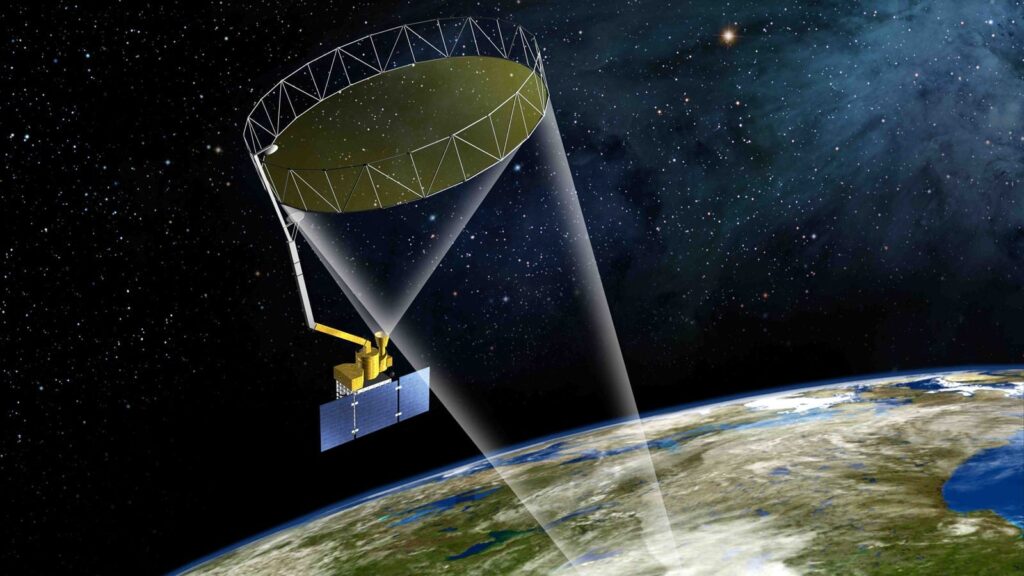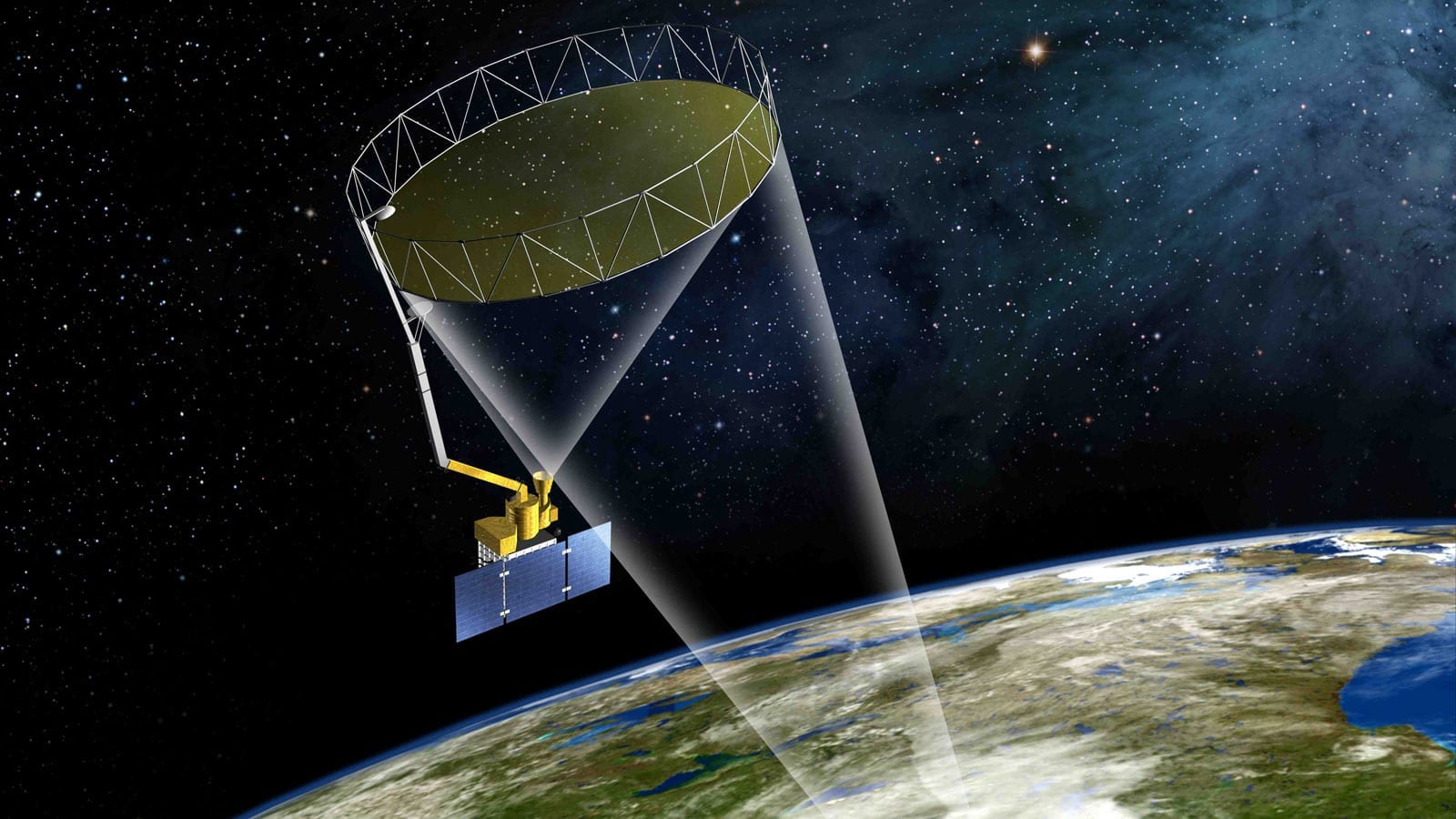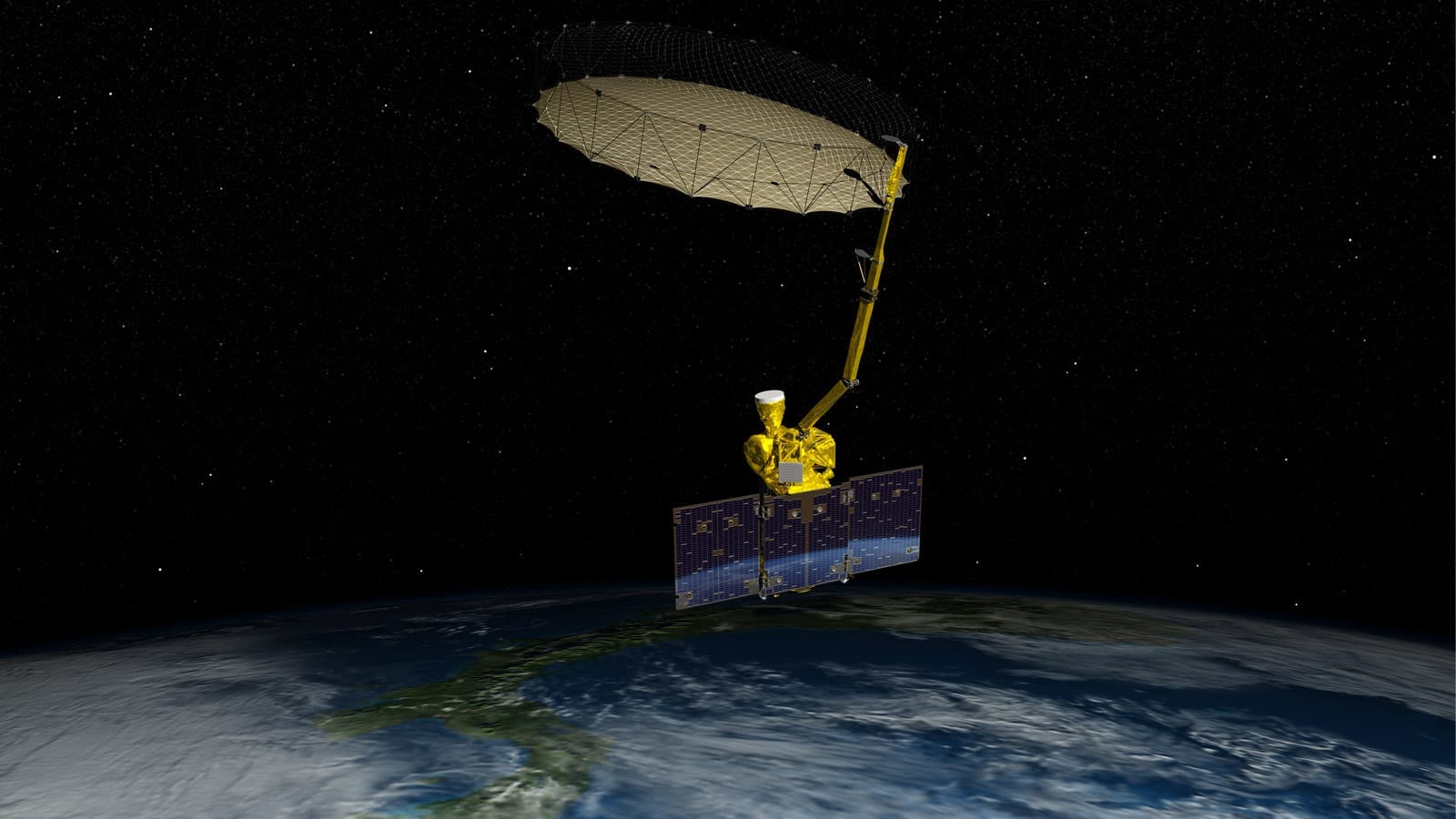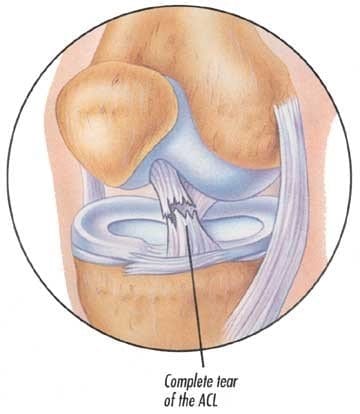
Scheduled for launch on Jan. 29, 2015, NASA’s Soil Moisture Active Passive (SMAP) instrument will measure the moisture lodged in Earth’s soils with an unprecedented accuracy and resolution. The instrument’s three main parts are a radar, a radiometer and the largest rotating mesh antenna ever deployed in space.
Remote sensing instruments are called “active” when they emit their own signals and “passive” when they record signals that already exist. The mission’s science instrument ropes together a sensor of each type to corral the highest-resolution, most accurate measurements ever made of soil moisture — a tiny fraction of Earth’s water that has a disproportionately large effect on weather and agriculture.
To enable the mission to meet its accuracy needs while covering the globe every three days or less, SMAP engineers at NASA’s Jet Propulsion Laboratory in Pasadena, California, designed and built the largest rotating antenna that could be stowed into a space of only one foot by four feet (30 by 120 centimeters) for launch. The dish is 19.7 feet (6 meters) in diameter.
“We call it the spinning lasso,” said Wendy Edelstein of NASA’s Jet Propulsion Laboratory, Pasadena, California, the SMAP instrument manager. Like the cowboy’s lariat, the antenna is attached on one side to an arm with a crook in its elbow. It spins around the arm at about 14 revolutions per minute (one complete rotation every four seconds). The antenna dish was provided by Northrop Grumman Astro Aerospace in Carpinteria, California. The motor that spins the antenna was provided by the Boeing Company in El Segundo, California.
“The antenna caused us a lot of angst, no doubt about it,” Edelstein noted. Although the antenna must fit during launch into a space not much bigger than a tall kitchen trash can, it must unfold so precisely that the surface shape of the mesh is accurate within about an eighth of an inch (a few millimeters).
The mesh dish is edged with a ring of lightweight graphite supports that stretch apart like a baby gate when a single cable is pulled, drawing the mesh outward. “Making sure we don’t have snags, that the mesh doesn’t hang up on the supports and tear when it’s deploying — all of that requires very careful engineering,” Edelstein said. “We test, and we test, and we test some more. We have a very stable and robust system now.”
SMAP’s radar, developed and built at JPL, uses the antenna to transmit microwaves toward Earth and receive the signals that bounce back, called backscatter. The microwaves penetrate a few inches or more into the soil before they rebound. Changes in the electrical properties of the returning microwaves indicate changes in soil moisture, and also tell whether or not the soil is frozen. Using a complex technique called synthetic aperture radar processing, the radar can produce ultra-sharp images with a resolution of about half a mile to a mile and a half (one to three kilometers).
Read more: Technology Innovations Spin NASA’s SMAP into Space
The Latest on: SMAP
[google_news title=”” keyword=”SMAP” num_posts=”10″ blurb_length=”0″ show_thumb=”left”]
via Google News
The Latest on: SMAP
- How NASA Spotted The Effects Of El Niño From Spaceon April 27, 2024 at 3:15 am
NASA has been tracking the El Niño event, which began in 2023 and had its biggest effects through the end of 2023 and into the early months of 2024.
- Hull play-off hopes all but ended by draw at Watfordon April 20, 2024 at 9:22 am
Ozan Tufan’s penalty blunder left Hull facing a mammoth task to make the play-offs after a 0-0 draw at Watford. Home keeper Daniel Bachmann saved the Turkish forward’s spot-kick in the 11th minute of ...
- Tomomi Nishimotoon April 18, 2024 at 11:02 pm
Pop culture obsessives writing for the pop culture obsessed.
- A bright future for Singapore's MICE industryon April 11, 2024 at 10:18 am
Ad Paid and Presented by Singapore Tourism Board. Discover why business event organisers are choosing Singapore as their preferred destination in 2023 and beyond.
- How NASA Spotted El Niño Changing the Saltiness of Coastal Waterson April 3, 2024 at 12:00 am
A fter helping stoke record heat in 2023 and drenching major swaths of the United States this winter, the current El Niño is losing steam this spring. Scientists have observed another way that the ...
via Bing News











